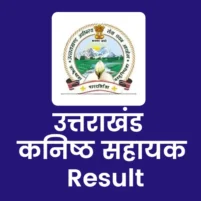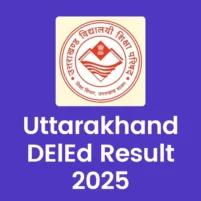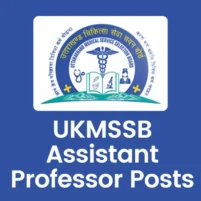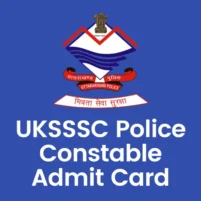UKSSSC is going to conduct the next competitive exam for the direct recruitment of LT Grade Assistant Teacher in the State. The written exam for the Sahayak Adhyapak LT (Hindi, English, Sanskrit, Science, Mathematics, Commerce, Music, Drawing, Physical Education, SST etc) will be conducted according the syllabus and schedule released by the Commission. On this page you can check the complete and latest Uttarakhand LT Grade Teacher Syllabus and Pattern for the upcoming exam. UKSSSC LT Syllabus Sahayak Adhyapak Exam 2024-2025 for Hindi, English, Sanskrit, Science, Mathematics, SST, Commerce, Music, Drawing, Physical Education teacher etc is given below.
UKSSSC LT Syllabus Assistant Teacher Exam
UKSSSC LT Syllabus for all the subjects (Hindi, English, Sanskrit, History, Geography, Economics, Biology, Chemistry, Physics, Mathematics, Commerce, Political Science, Art, Music, Home Science, Physical Education etc) with distribution of marks (questions) is being given here.
As per the new exam pattern, the LT Question paper will be of 02 Hours duration and will consist of total 100 Objective Type Multiple Choice Questions (01 Mark each) of maximum 100 Marks. Negative marking of ¼ marks will be applicable for every wrong answer. For qualifying the written exam, it’s required to secure minimum 45 marks for GEN/ OBC candidates and 35 marks for SC/ ST candidates.
For the latest information about the recruitment of UKSSSC LT posts like vacancy details, qualification, selection procedure, application form, notification, important dates etc., visit on the related page: Uttarakhand LT Assistant Teacher Recruitment 1544 TGT Posts
See also: UKSSSC Syllabus Group C (Samuh G) Exam Uttarakhand
Out of the total 100 questions, 50 questions will be based on Teaching Aptitude, Reasoning & General Knowledge and remaining 50 questions will be based on the related teaching subject(s) as per the pattern below.
For selection as LT Grade Assistant Teacher, there will be an objective type multiple choice competitive examination of 100 Marks of 02 Hours duration, which will have the following parts according to the educational qualification of the post:
- Part 1: Teaching Aptitude, Reasoning Test and General Knowledge (50 Marks)
- Part 2: Proficiency test in the respective teaching subject for which applied (50 Marks)
UKSSSC Uttarakhand LT syllabus for Teaching Aptitude, Reasoning, General Knowledge and Teaching Subjects is being given below as provided by the Commission.
PART-1(A) Teaching Aptitude (Common to All Subjects)
UNIT 01 – Education and Philosophy, relationship between education and philosophy, contribution of various philosophies of education- Naturalism, Pragmatism, idealism and Realism, educational thinkers and their pedagogical concepts- Rousseau, Plato, Aristotle, Dewey, Aurobindo, Gandhi, Vivekananda, Tagore, Gijju Bhai and Savitri Bai Phule, concept of education, training, teaching and indoctrination, functions and agencies of education, sources of education, issues and challenges of education in 21st century, opportunities and excellence in education, aculturization and multilingualism.
Role of teachers in emotional, social and national integration, Preamble of Indian Constitution, Constitutional provisions of Freedom, Justice, Equality and Fraternity, globalization, privatization, universalization and modernization of education, education and sociology, education as an investment, school as an agent of social change, teacher as a social reformer, Indian knowledge system, role of curriculum, teacher, school, family and community in value inculcation, environmental education.
UNIT 02 – Child development, personality: types, theories, and role of teachers in personality development, intelligence: concept, theories, and measurement, measurement of aptitude, difference between aptitude and attitude, learning: concept, theories (Pavlov, Piaget, Skinner, Thorndike), and their educational implications, motivation: types and educational implications, mental health and hygiene, criteria of good mental health.
Role of teachers in maintaining good mental health of students, Yoga and Fit India Movement for better health, guidance and counseling: qualities of a good counselor, role of teachers as counselor and stress manager, creativity and its nurturing, educational measurement and its areas, test construction: teacher made and standardized tests, uses of tests, Continuous and Comprehensive Evaluation (CCE), adjustment and its areas, case study, drama and Art in education.
UNIT 03 – Educational Technology and its types (Hardware, software, and system analysis), Teaching – Phases of teaching, levels of teaching, Theories of teaching, Models of teaching, teaching and learning: planning, organizing, leading and controlling.
Uses of Over Head Projector (OHP), Computer assisted learning, email, internet, websites, teleconferencing, e-library, e-reading and blogs.
Information and Communication Technology (ICT) for innovation in teaching, training and learning; effective teaching; creating conducive learning environment; modification of teacher behavior; micro-teaching; Simulated Social Skill Training (SSST), blended teaching; team teaching, and flander’s classroom interaction analysis.
ICT in: lesson preparation or lesson planning, demonstration of learning points, online and offline teaching-learning process, online assessment and examination, appropriate use of human resources.
Preparation and uses of: PPT, MOOCs, e-content, e-assignment, social network for the class, e-record, open education resources, use of web 2.0 tools for learners, ICT tools for teaching, learning and assessment, Teaching Learning Material (TLM)-Audio, Visual and Audio-Visual: Role of Edusat, Gyan Darshan, PRAGYATA (Guidelines for digital education), DIKSHA in learning with the pace of learner, latest trends in technology in/for education, school internship and related aspects, action research, methods, skills, tactics, and strategies of teaching.
UNIT 04 – Education of the gifted, delinquents, socially and economically disadvantaged children including Scheduled Castes (SCs), Scheduled Tribes (STs), minorities, backward classes, culturally and lingustically diverse, transgender, girls, etc., Gender issues- Gender equality, gender biasness, gender stereotypes, harassment and safety measures in schools, overview of girls education in Uttarakhand.
Educational provisions and pedagogical interventions for students with disabilities, concept, issues and practices in special education, integrated education and inclusive education, disabilities: types and causes, curriculum, classroom and infrastructural adaptations, community involvement, issue of equity, equality and quality, barriers and facilitators, provisions in National Education Policy (2020) for education of diverse group.
UNIT 05 – School administration, its structure and schemes with special reference to Uttarakhand, Role of principal and teacher in school administration and leadership, Decision making, Planning, Controlling, Organizing, Discipline, Supervision, Hurdles and their possible solutions in teaching learning process, Human Resource Management in Education.
Functions of the University Grants Commission (UGC), National Council for Teacher Education (NCTE), Rehabilitation Council of India (RCI), Central Advisory Board of Education (CABE), National Council of Educational Research and Training (NCERT), State Council of Educational Research and Training (SCERT), Kendriya Vidyalaya Sangathan (KVS), Navodaya Vidyalaya Sangathan (NVS), Kasturba Gandhi Balika Vidyalayas (KGBVs), District Institutes of Education and Training (DIETs) in facilitating education, issues of: educational autonomy, accountability and teacher absenteeism.
National Policy of Education (1968), National Policy on Education (1986), Revised NEP 1992, National Curriculum Framework for School Education: 2005 and 2023 respectively, National Education Policy (2020), National Curriculum Framework for Teacher Education (2009), National Skills Qualification Framework (NSQF), Right to Education Act (2009), Rights of Persons with Disability Act (2016).
Mudaliar Commission, Kothari Commission, National Knowledge Commission, Justice Verma Commission, Sarva Shiksha Abhiyan (SSA), Rashtriya Madhyamik Shiksha Abhiyan (RMSA), Samagra Shiksha, NISHTHA.
PART-1(B) Reasoning and General Knowledge (Common to All Subjects)
UNIT 1 (Non Verbal Ability Test): Series, Counting of figures, Classification, Completion of figures, Odd figure out, Figure matrix.
UNIT 2 (Verbal Ability Test): Alphabetical test, Coding and decoding test, Odd one out, Series completion test, Order arrangement, Blood relation test, Problems based on age.
UNIT 3 (General Knowledge):
Uttarakhand- State profile and Historical background, Bio diversity, Population, Ancient, medieval and modern Uttarakhand
India- Indian states, Prominent books and their authors, Main scientific discoveries, Renowned scientists, Prominent awards, Education, national symbols, Famous religious places, Prominent sports and related terminology.
PART-2 (Proficiency Test in Teaching Subject)
एल.टी हिन्दी सहायक अध्यापक
हिन्दी वर्णमाला।
हिन्दी शब्द रचना।
वाक्य- वाक्य भेद, मुहावरे व लोकोक्तियाँ।
देवनागरी लिपि।
हिन्दी साहित्य का इतिहास- पद्य साहित्य व गद्य साहित्य।
काव्यांग परिचय- रस, छन्द, अलंकार।
हिन्दी कविता 1- भक्ति कालीन, रीतिकालीन।
हिन्दी कविता 2- भारतेन्दु से छायावादीकाल तक, छायावादोत्तर कविता।
हिन्दी गद्य।
नाट्य साहित्य।
कथेतर गद्य।
रेखाचित्र एवं अन्य विधाएँ।
LT English Assistant Teacher
Grammer and English usage.
Drama.
British prose.
British, American and Indian English poetry- British poetry till 18th century, 19th century British poetry, 20th century British poetry, American and Indian English poetry.
British fiction.
Indian English fiction.
Indian short stories in English.
एल.टी संस्कृत सहायक अध्यापक
व्याकरण- संज्ञा प्रकरण, सन्धि प्रकरण, शब्द रूप, समास, कारक।
छन्द।
अलंकार।
वेद एवं वैदिक साहित्य।
दर्शन साहित्य- तर्क संग्रह।
साहित्य।
संस्कृत साहित्य का इतिहास।
Science (Chemistry, Botany and Zoology)
Syllabus of Chemistry:
Unit A – Atomic Structure, Periodic Properties, Chemical Bonding- Ionic bonding, covalent bonding, s-Block elements, p-Block elements, Chemistry of noble gases, Metallurgical processes, Chemistry of Transition elements (first, second and third series), Oxidation and reduction, Coordination Chemistry, Chemistry of lanthanides and actinides, Acids and bases, Non aqueous solvents, Magnetic Properties of transition metal complexes, Electronic spectra of transition metal complexes, Organometallic chemistry.
Unit B – Structure and bonding, Mechanism of organic reactions, Stereochemistry of organic compounds, Akanes and cycloalkanes, Alkenes, cycloalkenes, dienes and alkynes, Arenes and aromaticity, Alkyl and aryl halides, Alcohols, Phenols, Ethers and epoxiders, Aldehydes and ketones, Carboxylic acids and their derivatives, Organic synthesis via enolates, Carbohydrates, nitrogen containing organic compounds, Amino acids, peptides, proteins and nucleic acids, Hetrocyclic compounds, Organo-metallic compounds in organie synthesis, Spectroscopy of organic compounds, introduction, Electromagnetic spectrum; absorption spectroscopy, Infra red (IR) absorption spectroscopy, Nuclear magnetic resonance (NMR) spectroscopy, Vibrational spectrum, Rotational spectrum.
Unit C – Gaseous states, Liquid state, Solid state, Colloideal state, Chemical equilibrium, Ionic equeilibria, Phase equilibrium, Chemical kinetics and catalysis, Thermodynamics I, Thermodynamics II, Thermodynamics III, Electrochemistry I, Electrochemistry II, Surface chemistry, Elementary quantum mechanics, Photo chemistry, Solutions and colligative properties
Unit D – Green chemistry, Bioinorganic chemistry, Fats, oils and, detergents, Polymers, Synthetic dyes, Chromatography, Pharmaceutical compounds.
Syllabus of Botany:
Microbiology, fungi, lichens and elementary plant pathology, Algae, bryophyta and pteridophyta, Gymnosperms and taxonomy of angiosperms, Anatomy, embryology and morphogenesis, Ecology and biostatistics, Cytology, genetics, molecular biology and biotechnology, Physiology and biochemistry, Economic botany and plant breeding.
Syllabus of Zoology:
Animal diversity- nonchordata, chordata, Embryology, animal behavior, Applied zoology, toxicology, Ecology and environmental biology, Microbiology and biostatistics, Taxonomy and evolution, Biotechnology and bioinformatics, Biological chemistry, Physiology, Cell biology, Genetics.
Maths (Mathematics and Physics)
Syllabus of Mathematics:
Matrics and determinants, Trigonometry, Vector analysis, Differential calculus, Integral calculus, Coordinate geometry, Algebra, Differential equations, Statics and dynamics, Real analysis, Complex analysis, Linear algebra, Numerical analysis, Mathematical statistics.
Syllabus of Physics:
Mechanics – vectors, gravitations- field and potential, conservation of energy, conservation of linear and angular momentum, electrostatics, magnetism, magnetic, properties of materials, electromagnetic induction, maxwell’s equations and electromagnetic wave propagation.
Optics – interference, diffraction, polarizations, associated optical instruments.
Nuclear physics – basics of atomic and nuclear physics, radiation detection and monitoring devices- radiation quantities and units, radiation detection, elementary particles.
Quantum mechanics – wave particle duality, origin of quantum theory, formalism of quantum mechanics, schrodinger equation- the first law of quantum mechanics.
Solid state physics- crystal structure, elementary, lattice dynamics, magnetic properties of metter, dielectric properties of materials, elementary band theory.
Thermal physics and statistical – thermodynamic description of system, thermodynamics potentials, kinetic theory of gases, theory of radiation, statistical mechanics.
Basic electronics – network theorems , power supplies, solid state devices, amplifiers, oscillators, Boolean algebra, logic gates, basics of special theory of relativity, consequences of Lorentz transformations, dynamics of rigid body and idea of moment of inertia, fluids, elasticity,
Waves, acoustics and oscillations- simple harmonic oscillations, damped harmonic oscillations, forced harmonic oscillations, applications, analysis of wave motions, ultrasonic, acoustics, application, Elements of modem physics.
एल.टी गृह विज्ञान सहायक अध्यापक
गृह प्रबन्ध – गृह विज्ञान की अवधारणा तथा अध्ययन क्षेत्र (अर्थ, परिभाषा व अध्ययन क्षेत्र, घन व्यवस्थापन, कला के सिद्धान्त एवं तत्व, कार्य सरलीकरण, हाउस कीपिंग।
पारिवारिक वस्त्र एवं परिधान – परिधान परिचय, सामान्य तन्तुओं की पहचान व परीक्षण, तन्तु परिसज्जाएं, वस्त्रों का चयन, वस्त्र निर्माण के सिद्धान्त, वस्त्र संग्रहण व सुरक्षा, घुलाई कला।
आहार एवं पोषण – आहार एवं पोषण एक परिचय, भोजन के आवश्यक घटक, उनके स्रोत, कार्य, आवश्यकता व इनकी न्यूनता से उत्पन्न रोग,खाद्य समूह,आहार नियोजन, जीवन चक्र की विभिन्नउ अवस्थाओं में आहार व पोषण, आहार परिरक्षण, विभिन्नम प्रकार की पाक विधियां तथा भोजन की पौष्टिकता पर उनका प्रभाव, खाद्य विषाक्तता।
बाल विकास- मातृत्व, बाल्यावस्था (वृद्धि एवं विकास), गर्भावस्था, जन्म के प्रकार, जन्मोपरान्त समन्वय, तापमान, श्वसन, पोषण, बाल्यावस्था, शिशु सुरक्षा, शिशु आवश्यकता व शारीरिक विकास, शिशु (भाषा एवं बोली व सामाजीकरण), बाल्यावस्था की सामान्य समस्याएं (नकारात्मकता, बिगडैल स्वभाव, ईर्ष्या, असामाजिक व्यवहार, शारीरिक समस्याएं, भावात्मक समस्याएं व सम्भावित दुर्घटनाएं) , शैशवावस्था (व्यवहार, विशेषता व संवेदन योग्यता) ।
मानव विकास – जीवन चक की विभिन्ना अवस्थाओं में विकास (पूर्व विद्यालयी अवस्था), यौवनोत्सुक अवस्था, किशोरावस्था, प्रारम्भिक वयस्क अवस्थता, मध्य वयस्क अवस्था, वृद्धावस्था।
आवास एवं आन्तरिक सज्जा- घर (कार्य, परिवार का आकार, संगठन गतिविधया), गृह स्थिति, गृह नियोजन के सिद्धान्त, परिवार कल्याण एवं सामुदायिक शिक्षा, गृह विज्ञान प्रसार शिक्षा।
LT Commerce Assistant Teacher
Financial accounting
Advanced financial accounting
Cost and management accounting
Financial management and taxation
Money, banking, insurance, auditing, law and economics
LT Physical Education Assistant Teacher
History and fundamentals of physical education- nature, scope and significance.
Anatomy and physiology in physical education.
Health education.
Sports training.
Kinesiology and biomechanics.
Test and measurement.
Sports psychology.
Officiating and coaching.
एल.टी संगीत सहायक अध्यापक
संगीत का शास्त्रीय अध्ययन।
संगीत का ऐतिहासिक अध्ययन, ग्रन्थों का अध्ययन, गायन शैलियां।
घराना एवं संगीतज्ञ, जीवनी।
वाद्य वर्गीकरण- तत्, सुषिर, अवनद्ध, घञ्।
रागों एवं तालों का परिचय।
LT Art (Drawing) Assistant Teacher
Fundamental of arts- medium, technique and folk art (Indian)
History of art- Indian painting and sculpture, western painting and sculpture
Aesthetics (Indian and western)
Definition of technical drawing, plane and solid geometry 2D and 3D, building drawing, shape, size, artistic, architecturing drawing, basic form.
LT General/ SST Syllabus (History, Geography, Political Science and Economics)
इतिहास पाठ्यक्रम:
भारतीय इतिहास के स्त्रोत: साहित्यिक एवं पुरातात्विक।
प्रस्तर युग का वृहद सर्वेक्षण: पुरापाषाण काल, मध्य पाषाणकाल, नवपाषाण काल।
ताम्रपाषाणकालीन संस्कृति, लौह संस्कृति, महापाषाण संस्कृति।
हड़प्पा सभ्यता: उत्पत्ति, विस्तार, विशेषतायें, पतन।
वैदिक एवं उत्तर वैदिक युग: स्त्रोत, उत्पत्ति, राजनैतिक, सामाजिक, आर्थिक एवं धार्मिक स्थिति।
प्रादेशिक राज्यों का उदय: महाजनपद, मगध साम्राज्य की सफलता के कारण।
छठी शताब्दी ई०पू० के सामाजिक-थार्मिक आन्दोलन: जैन धर्म, बौद्ध धर्म इत्यादि।
मौर्य काल: मौर्य साम्राज्य की स्थापना एवं विस्तार, प्रशासन एवं अर्थव्यवस्था, अशोक का धम्म, मौर्य कला।
उत्तर मौर्य काल: शुंग, कण्व, सातवाहन, राजनीतिक-आर्थिक स्थिति, कला एवं स्थापत्य।
शक, पार्थियन एवं कुषाण युगः कनिष्क प्रथम, कला एवं स्थापत्य का विकास, कुषाण वंश का पतन।
गुप्त काल: स्त्रोत, प्रशासन, आर्थिक स्थिति, कला एवं स्थापत्य, पतन।
उत्तर गुप्त काल: हर्षवर्धन, राजनीतिक, आर्थिक एवं धार्मिक स्थिति, चालुक्य, पल्लसव, पाल, प्रतिहार एवं राष्ट्रकूट वश।
चोल वंश: प्रशासन, स्थानीय स्वशासन।
तुर्कों का आक्रमण: गजनवी, गोरी वंश, कारण एवं परिणाम।
दिल्लीं सल्तनतः गुलाम, खिलजी, तुगलक, सैयद एवं लोदी वंश, प्रशासन, अर्थव्यवस्था, कला एवं स्थापत्य।
विजयनगर एवं बहमनी साम्राज्य: राजनीतिक, आर्थिक स्थिति, कला, स्थापत्य।
भक्ति एवं सूफी आंदोलन: उत्पत्ति एवं विकास।
मुगल काल: उद्भव, विकास, बाबर, हुमायूँ, अकबर की प्रशासनिक एवं धार्मिक नीति, जहाँगीर एवं नूरजहाॅं का मूल्यॉंकन, शाहजहाँ: कला का विकास, उत्तराधिकार का युद्ध, औरंगजेब, मुगल साम्राज्य का पतन, उत्तर मुगल काल।
मराठों का उदय: शिवाजी, पेशवाओं के अन्तर्गत प्रशासन, मराठा साम्राज्य का पतन।
भारत में ब्रिटिश साम्राज्य का आरम्भ: यूरोपियों के मध्य संघर्ष एवं विस्तार।
औपनिवेशिक अर्थव्यवस्था: कृषि एवं व्यापार।
18 वीं शताब्दी के सामाजिक एवं धार्मिक सुधार आंदोलन: राजा राममोहन राय, ईश्वर चन्द विद्यासागर, सर सैयद अहमद खाँ इत्यादि।
स्वतंत्रता आन्दोलन: उदारवाद, उग्रवाद, क्रान्तिकारी।
गाँधीवादी आन्दोलन: असहयोग, सविनय अवज्ञा, भारत छोड़ो आन्दोलन।
साम्प्रदायिकता एवं भारत का विभाजन।
भारत छोड़ो आन्दोलन के बाद की घटनायें: शिमला सम्मेलन, कैबिनेट मिशन, संविधान सभा, माउन्टबेटेन योजना, गणतन्त्र की स्थापना।
भूगोल पाठ्यक्रम:
उत्तराखण्ड का भूगोल – भौगोलिक अवस्थिति, भू-आकृति एवं संरचना, मौसम एवं जलवायु, जल प्रवाह तन्त्र, प्राकृतिक वनस्पति, कृषि- परम्परागत कृषि एवं फसलें, फसलों का उत्पादन एवं क्षेत्रीय वितरण, वाणिज्यिक कृषि, फसल विविधता, जैविक कृषि, पोषण एवं खाद्यान्न सुरक्षा, पशुपालन, सिंचाई के साधन, प्राकृतिक संसाधन-हिमनद, झील तथा जलाशय, बहुउद्देशीय जल विद्युत परियोजना, मृदा, खनिज, जड़ी बूटियाँ एवं चिकित्सकीय पौधे, मानव संसाधन-, प्रवास तथा मनीऑर्डर अर्थव्यवस्था, पर्यटन एवं तीर्थाटन, नगरीकरण, छावनियाँ, परिवहन तन्त्र, औद्योगीकरण एवं औद्योगिक विकास, अनुसूचित जातियाँ तथा जनजातियाँ, आपदाएँ एवं प्रबन्धन- हिमस्खलन, भूस्खलन, भूकम्प, बाढ़, बादल फटना, सूखा, वनाग्नि, मानव एवं वन्य जीव संघर्ष।
भारत का भूगोल – भौगोलिक परिचय, उच्चावच्च एवं संरचना, भौतिक प्रवेश, जलवायु प्रदेश, जल प्रवाह तन्त्र, प्राकृतिक वनस्पतियाँ, मिटि्टयाँ, जल संसाधन, सिंचाई के साधन, पशुपालन, कृषि एवं कृषि-जलवायु प्रदेश, खनिज संसाधन;- लौह अयस्क, खनिज तेल, कोयला, उद्योग;- लोहा एवं इस्पात उद्योग, सीमेन्ट उद्योग, तेल शोधनशाला, सूती कपड़ा उद्योग, चीनी उद्योग।
जनसंख्या एवं अधिवास, नगरीकरण, परिवरहन के साधन।
पर्यावरणीय समस्याएं;- जल प्रदूषण, वायु प्रदूषण, ध्वनि प्रदूषण, पर्यावरण अपघटन, कूड़ा करकट प्रबन्धन, नमामि गंगे परियोजना, सूदूर संवेदन की अवधारणा एवं महत्व, भौगोलिक सूचना प्रणाली, मौसम पूर्वानुमान।
आपदायें एवं आपदा प्रबन्धन:- भूकम्प, उष्ण कटिबन्धीय चक्रवातीय तूफान, बाढ़, मरुस्थलीकरण, सुनामी।
विश्व का भूगोल – पृथ्वी की उत्पत्ति एवं सौर मंडल, भू-संतुलन कां सिद्धान्त, पर्वतों के निर्माण के सिद्धान्त, चट्टान, अपरदन, अपक्षय, वायुमण्डल की संरचना, विश्व जलवायु प्रदेश; महासागरीय धाराएं, सागरीय नितल की बनावट, ज्वार-भाटा, एलनीनो तथा लानीनो, कृषि एवं उद्योग; खनिज, ऊर्जा संसाधन, कृषि प्रदेश, औद्योगिक प्रदेश, जनसंख्या, जनजातियाँ, विश्व तापमान वृद्धि एवं जलवायु परिवर्तन, अन्तराष्ट्रीय व्यापार।
राजनीति विज्ञान पाठ्यक्रम:
राज्य: परिभाषा और तत्व, राज्य की उत्पत्ति के सिद्धान्तः विकासवादी तथा सामाजिक समझौता सिद्धान्त।
संप्रभुता- परिभाषा और मुख्य विशेषताएँ।
अवधारणाएँ-स्वतंत्रता, समानता, न्याय, अधिकार तथा प्रजातंत्र।
शासन के प्रकार, संसदात्मक और अध्यक्षात्मक शासन, एकात्मक और संघात्मक, ब्रिटेन व अमेरिका के संदर्भ में।
दलीय व्यवस्था तथा दबाव समूह।
लोक कल्याणकारी राज्य की अवधारणा।
राजनीतिक विचारक-यूनानीः प्लेटो और अरस्तू।
राजनीतिक विचारक भारतीय-कौटिल्य, गांधी और अम्बेडकर।
मार्क्सवाद, नारीवाद, पर्यावरणवाद, संयुक्त राष्ट्र संघ-मुख्य अंग तथा उनके कार्य, मानवाधिकार, आतंकवाद, वैश्वीकरण, गुट निरपेक्ष आंदोलन।
दक्षिण एशिया क्षेत्रीय सहयोग संगठन (सार्क)।
भारतीय संविधान का निर्माण और स्रोत।
भारतीय संविधान की प्रस्तावना और मुख्य विशेषताएँ।
मौलिक अधिकार और मौलिक कर्तव्य, राज्य के नीति निर्देशक सिद्धान्त।
संघीय कार्यपालिका-राष्ट्रपति प्रधानमंत्री और मंत्रिपरिषद।
संघीय संसद- राज्य सभा और लोक सभा।
संघीय न्यायपालिका – सर्वोच्व न्यायालय- संरचना तथा क्षेत्राधिकार, न्यायिक पुनरावलोकन।
भारत में संघीय व्यवस्था का स्वरूप।
चुनाव आयोग – संगठन और कार्य तथा शक्तियाँ।
पंचायत राज्य उत्तराखण्ड के विशेष संदर्भ में।
अर्थशास्त्र पाठ्यक्रम:
इकाई 1 – व्यष्टि अर्थशास्त्र: अर्थ, क्षेत्र एवं अर्थशास्त्र की अध्ययन विधियां, उपयोगिता विश्लेषण, मांग का नियम, तटरथता वक्र विश्लेषण, उपभोक्ता का संतुलन; मांग की लोच, उत्पत्ति के नियम, उत्पादन फलन, सममात्रा वक्र, उत्पादक का संतुलन, उत्पादन की लागत और लागत वक्र, पूर्ति वक्र, आगम वक्र, बाजार ढाँचा, पूर्ण प्रतियोगिता, एकाधिकार, एकाधिकारात्मक प्रतियोगिता के अंतर्गत कीमत निर्धारण तथा अल्पाधिकार; साधन कीमत निर्धारण- वितरण का सीमांत उत्पादकता सिद्धांत, श्रम, लगान, ब्याज तथा लाभ के सिद्धांत।
इकाई 2 – समष्टि अर्थशास्त्र: अर्थ, क्षेत्र तथा समष्टि अर्थशास्त्र के प्रकार, राष्ट्रीय आय – अर्थ, अवधारणायें तथा इसकी माप, क्लासिकी तथा केन्जियन रोजगार सिद्धान्त, उपभोग फलन, गुणक की अवधारणा; स्फीति; व्यापार चक्र: मुद्रा एवं बैकिंग- अवधारणा, कार्य नाप, मुद्दा का परिमाण सिद्धांत- लेन-देन तथा नकद शेष दृष्टिकोण, केन्द्रीय बैंक, व्यापारिक बैंक, बैकिंग क्षेत्र सुधार, मौंद्रिक नीति; लोक वित- अर्थ, राजकोषीय कार्य, अधिकतम सामाजिक लाभ का सिद्धांत, लोक व्यय- अर्थ, नियम एवं लोक व्यय के प्रभाव: लोक आय-स्त्रोत, कराघात एवं करापात तथा करारोपण के प्रभाव, वस्तु एवं सेवा कर (GST); लोक ऋण- अर्थ, स्त्रोत और भुगतान की विधियां, सार्वजनिक वस्तु एवं वाह्ययतायें, राजकोषीय नीति।
इकाई 3 – भारतीय अर्थव्यवस्था: भारतीय अर्थव्यवस्था की विशेषतायें, जनांकिकीय प्रवृत्तियां मानव विकास सूचकांक, प्राकृतिक संसाधन, कृषि उत्पादन तथा उत्पादकता की प्रवृत्तियां, कृषि वित और विपणन, सहकारी आंदोलन, खाद्य सुरक्षा; औद्योगिक निष्पादन और समस्या यें, लघु उद्योग, सूक्ष्म-लघु एवं मध्यम उद्योग, भारत में सुधार पूर्व एवं सुधार पश्चात औद्योगिक विकास, नई औद्योगिक नीति, नीति आयोग; भारत का विदेशी व्यापार- प्रवृत्ति और दिशा, भारत का भुगतान संतुलन, नई विदेशी व्यापार नीति, विश्व व्यापार संगठन (WTO) एवं भारत।
सामाजिक सुरक्षा योजनायें, भारतीय कर प्रणाली के वर्तमान मुद्दे, भारत में संघीय व्यवस्था, संघीय बजट (नवीनतम) विश्लेषण तथा बजट घाटे, गरीबी निवारण और रोजगार सृजन कार्यक्रम, उत्तराखण्ड की अर्थव्यवस्था- मूलभूत विशेषतायें, प्राकृतिक संसाधन- खनिज, जल और वन; जनसंख्या, फसल चक्र, जैविक खेती और परम्परागत फसलें, सहकारी कृषि, राज्य की अधः संरचना, औद्योगीकरण तथा विपणन की समस्याजयें, प्रवास, पर्यटन, क्षेत्रीय असंतुलन, राज्य की कल्याणकारी योजनायें तथा आपदा प्रबंधन तंत्र, राज्य के बजटों (नवीनतम) का विश्लेषण।
इकाई 4 – अर्थशास्त्र में सांख्यिकी का अनुप्रयोग: समंकों का संकलन, वर्गीकरण तथा प्रदर्शन; केन्द्रीय प्रवृत्ति की माप- माध्य, माध्यिका एवं बहुलक, अपकिरण, लारेंज वक्र, सहसंबंध-कार्ल पियर्सन तथा कोटि अंतर विधि, सूचकांक।
See also: UK LT Exam Date, Admit Card, Answer Key and Result
See also: Uttarakhand Lecturer Recruitment PGT Vacancies
See also: Uttarakhand Govt all Recruitment and Exam Updates
Search any information available on this site by the help of the search box above. You may visit later on this page for any latest updates related to UKSSSC LT Syllabus, Sahayak Adhyapak Exam Uttarakhand etc.



